Early the other afternoon as I was running errands, I decided to stop by a semi-regular shooting locale and see what the conditions were like. After the long summer with high temperatures and no rain, we’ve had a wet spell, and the pond a short distance away, the one that plays host to green tree frogs so often, deserved a check. The frogs were indeed out, and those photos will be forthcoming, but right now I’m going to talk about something else, in the chance that you are not an experienced macro photographer but thinking about it. On the chance that you are not a bookkeeper for a non-profit agency but thinking about it, I’ll have a post about that too. I’ll get to them all eventually…
Here’s the basic premise: you can do macro work with a minimum of equipment, just finding subjects as you go along, but the ability to get quality photos will be much less than if you have, for instance, a portable and versatile lighting rig, or aim to be out for certain conditions that you’re prepared for, or shooting in a ‘studio’ setup, and so on. Macro work introduces a lot of demands, the chief among them a very narrow range of focus and short depth of field. You can increase the depth of field by closing down the aperture, but this makes the shutter speeds go much longer, and you fall prey to subject motion, camera shake, and simply your own inability to hold still right at the perfect focus distance (which may be measured in millimeters.) Add in less-than-optimum lighting and a stiff breeze, and you’re virtually guaranteed to throw out more than you keep – sometimes, even everything you just shot. Let’s look at my recent example.
So, an Eastern carpenter bee (Xylocopa virginica) was visiting a goldenrod cluster right next to me, and I did a quick impromptu session. A stiff breeze was blowing, the bee was far from holding still itself, and the light was a bit too high in contrast (worsened by the fact that I had no time to change to low-contrast camera settings.) Leaning in as quickly as I dared, I began firing off frames. Here’s the very first in the sequence, full frame to give you an idea of my working distance:
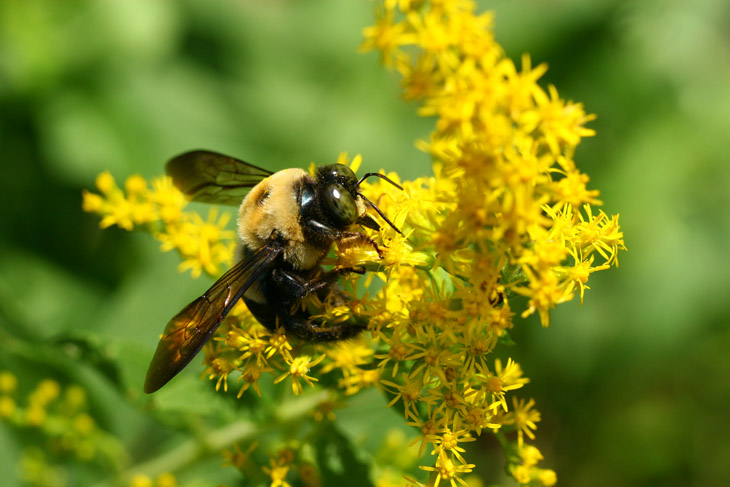
… and now, a detail crop from that same frame:
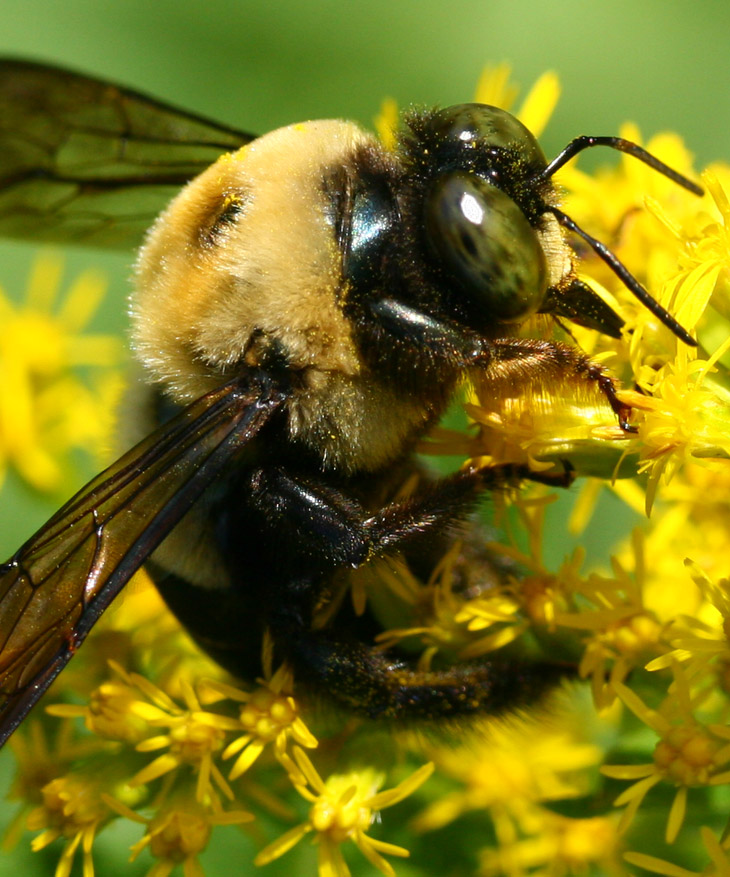
Did I mention that I was also using manual focus? With the extremely sharp Mamiya 80mm macro there really isn’t a choice, but often enough in such conditions you might want to use manual focus anyway, simply picking a setting and then doing fine adjustments with your camera/body position instead. Given the high-contrast conditions, the light is at a pretty good angle and shows great detail, the depth is about as ideal as you can get (note how the body details are all sharp, but the back wing is well out of focus,) and even the secondary leg peeked out into the sun enough to distinguish it from the shadow – the only portion where the shadows worked against me is near the rear abdomen where we can excuse (well, I can) the loss of detail. Anyway, even I looked at this image during sorting and said, “Aw, dayyumm…”
Am I failing to make my point? Don’t worry, here are the next seven frames, shot within the space of nine seconds, and cropped a little to show comparative detail.
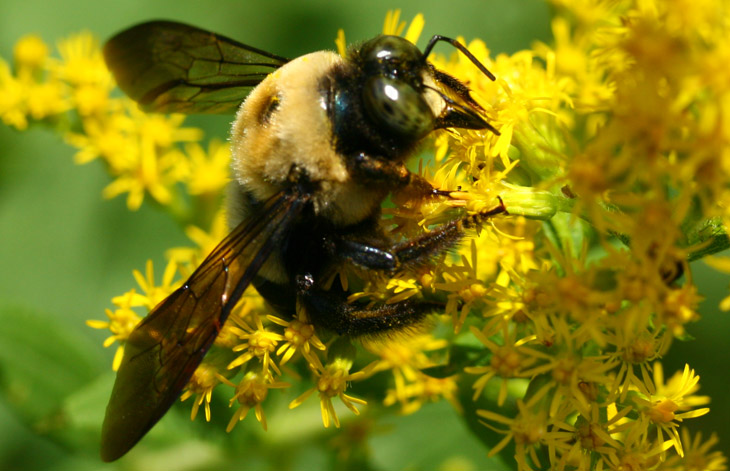
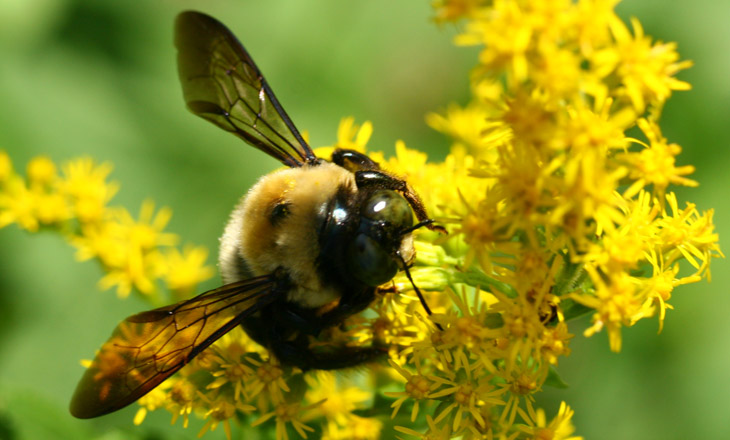
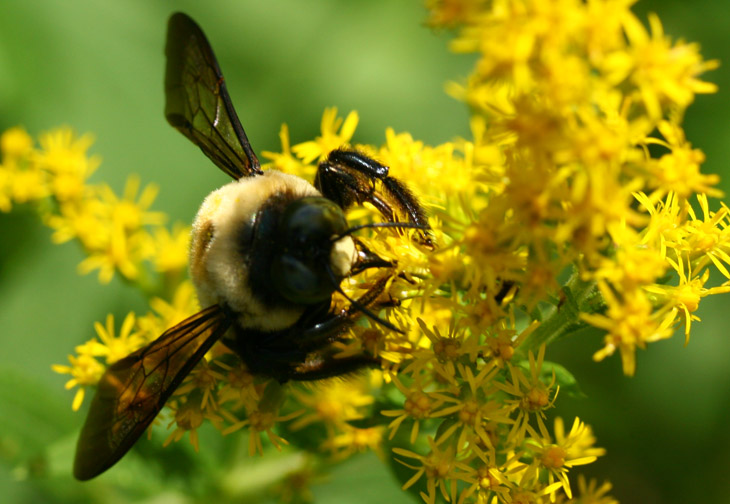

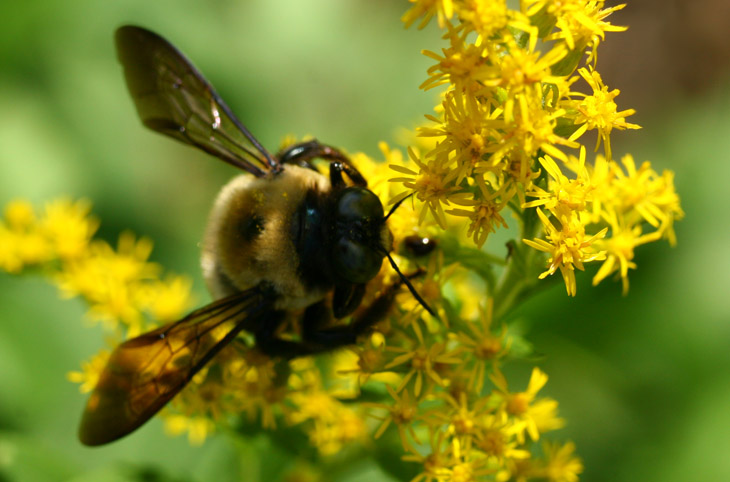
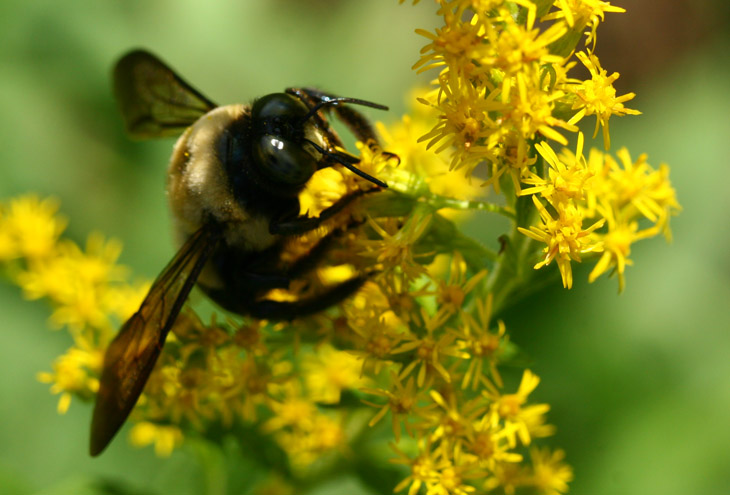

As you can see, something doesn’t work in each of them, mostly bad light angles and a lack of critical sharpness (worse when seen at a greater resolution than the blog will produce.) That’s a 12.5% hit rate, and this is with a subject and conditions that I felt comfortable tackling; there were plenty of other options that day that I knew just wouldn’t work out, and simply didn’t take any frames. As you might imagine, a stiff breeze can make the entire flower cluster wave back and forth in a greater arc than my frame coverage, so waiting until the breeze is momentarily still is an absolute necessity. Of course, the bee may have moved on by then.
Given all of that, I credit the first image to a great deal of luck, and it’s understandable that at times the luck may just never materialize. You do what you can to improve your chances, and recognize that some conditions are just a bitch to work with.
And, that the really cool photos that you see (from anyone, of any subject) might just be the one that worked out of a huge pile that did not. I don’t recommend hosing around the camera in the hopes of snagging that one shot out of many – you’ll do better with knowing what you’re doing and what’s going to trash the shot – but at times, it’s still going to be that single frame that makes the grade.



















































